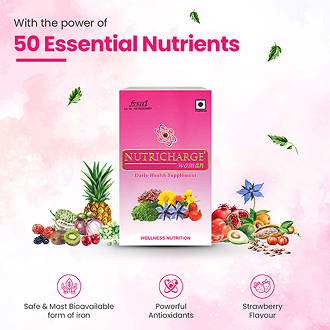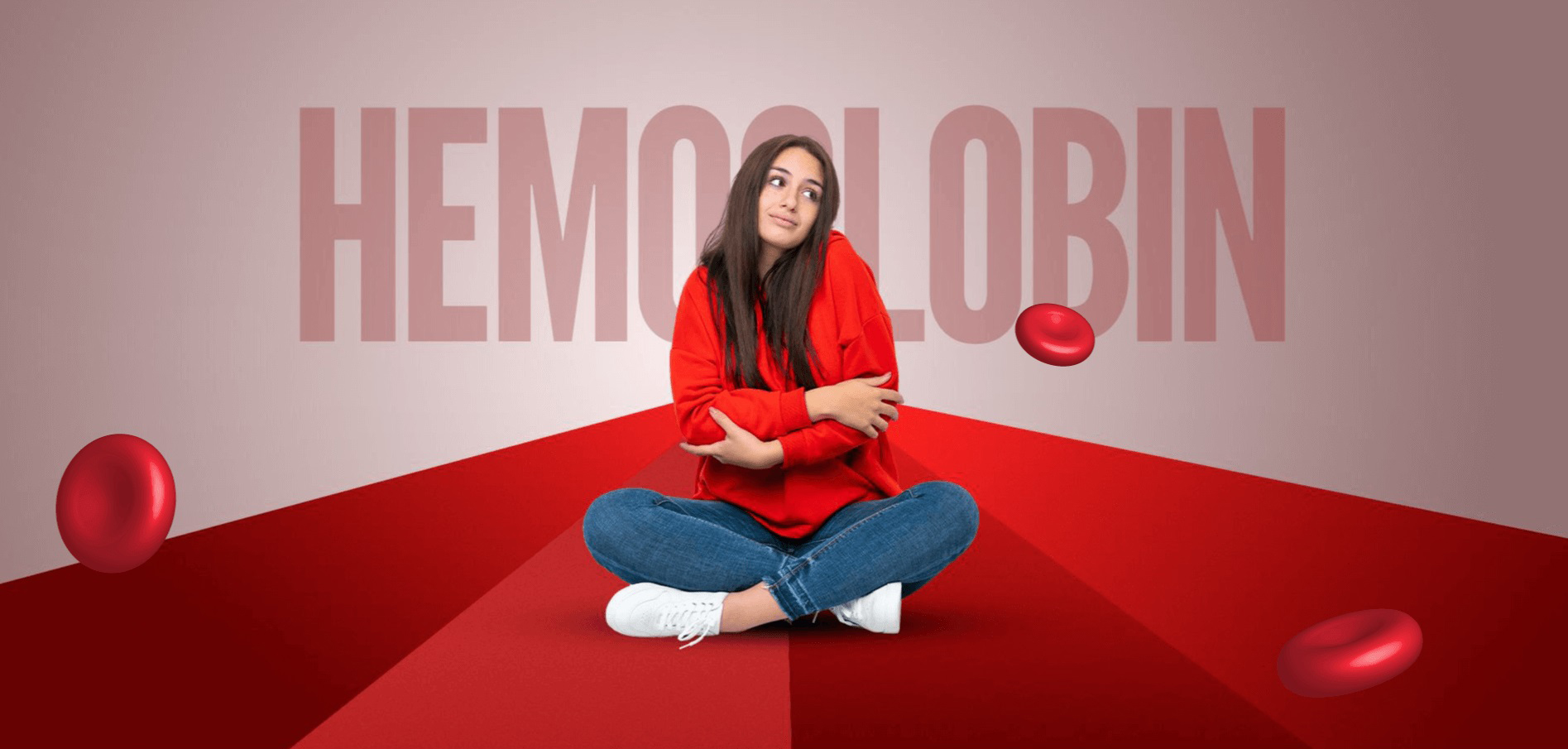
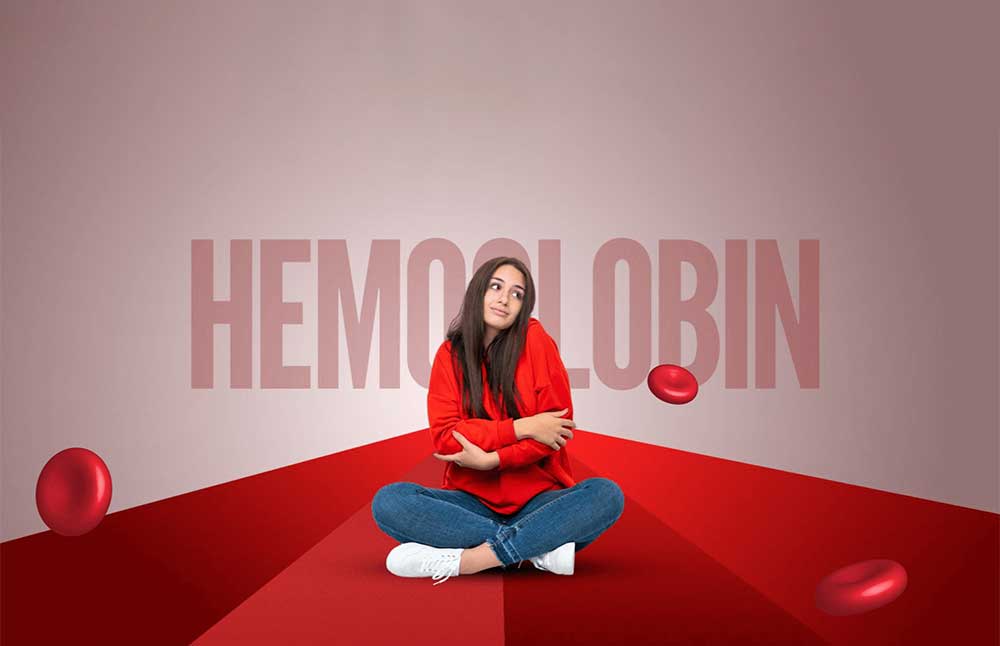
Facts about Hemoglobin
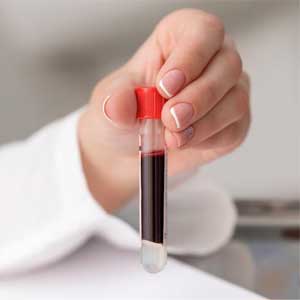
Hemoglobin is a kind of protein in
our blood that contains iron
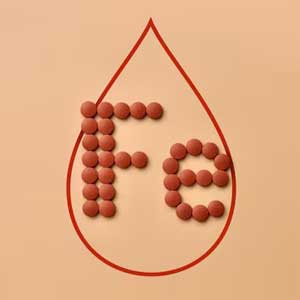
Hemoglobin contains around
70% of our body's iron
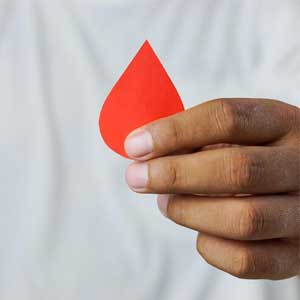
Men lose only small amounts of iron in urine,
feces,
gastrointestinal tract and through skin
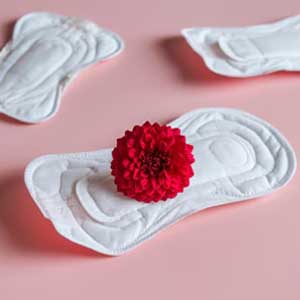
Women lose a great amount of iron
due to blood
loss during their
menstruation every month
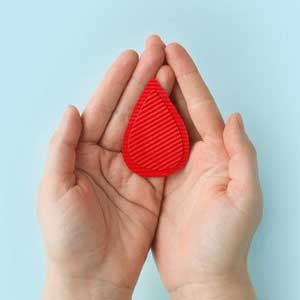
It has been reported that 3 to 24 mg
of iron is
lost during each
menstruation cycle*

Hemoglobin is a kind of protein in our
blood
that contains iron
*Harewood WJ, Gillin A, Hennessy A, Armitstead J, Horvath JS, Tiller DJ. The effects of
the menstrual cycle, pregnancy
and early lactation on haematology and plasma
biochemistry in the baboon (Papio hamadryas). J Med Primatol. 2000
Dec; 29(6):415-20. doi: 10.1111/j.1600-0684.2000.290606.x. PMID: 11168833
Potential benefits of Nutricharge Woman
for pregnant ladies and
lactating mothers
Helps prevent Iron Deficiency Anemia
Helps meet the increased requirement of iron, folate and vit B12 for optimum development and growth of the baby
Helps in ensuring that the baby has good immunity through out his/her life

Helps reduce the risk of neural tube defect (incomplete development of brain and spinal cord of the baby)

Helps in reducing the risk of pre‑term child‑birth

Helps in formation of healthy bones of the baby

Helps in ensuring the baby is born with optimum weight
Reasons of low Hemoglobin
Reasons of low Hemoglobin
- Menstruation in women
- Dietary Deficiency of iron, Vitamin B12 & Folate
- Pregnancy or growth spurt in children and teenagers
- Lack of production of RBCs in conditions like cancers and kidney disease
- Breakdown of RBCs during severe infections and damage from toxins
- Loss of blood during surgery, accident or child-birth
- Inability to absorb iron such as in celiac disease
An average adult man has about 1000 mg of stored iron that is enough for about 3 years. An average adult woman has only about 300 mg of stored iron that is enough for only about 6 months. When iron intake is chronically low, hemoglobin level decreases
Iron Deficiency Anemia
Iron Deficiency Anemia
- Most common type of anemia
- Develops when the iron reserves in the body drop too low to support RBC production
Effects of Iron Deficiency Anemia
Effects of Iron Deficiency Anemia
- Shortness of breath
- Leg cramps on climbing stairs
- Chest Pain
- Irregular heartbeat
- Low blood pressure and Headache
- Pale Skin
- Difficulty concentrating
- Poor appetite
- Swollen feet or hands
- Weakness or fatigue and dizziness
Who is at risk of Iron Deficiency Anemia?
Who is at risk of Iron Deficiency Anemia?
Menstruating girls and women
Due to loss of blood
Infants
Born with low birth weight or pre‑mature
Children and adolescents
Growth spurts demand more iron
Pregnant women
Need more iron for fetal development
Nursing mothers
Need more iron for their babies
As per Ministry of Health and Family Welfare, in India*
- Adolescent girls with anemia – 59.1%
- Women (15‑49 yrs) with anemia – 57%
- Pregnant women (15‑49 yrs) with anemia – 52.2%
Lifestyle changes the can help in maintaining optimum Hemoglobin
Lifestyle changes the can help in maintaining optimum Hemoglobin
- Include iron rich foods in your diet such as spinach, beetroot, carrots, tomato, curry leaves, coriander leaves, capsicum, indian gooseberry, other green vegetables, range, guava, strawberry, papaya, raisins, dates, walnuts, almonds, figs, sunflower seeds, melonseeds, ragi, jowar, bajra, blackgram, lentils and other whole grains
- Increase the use of lemon in your diet
- Have a small piece of jaggery after meals
- Drink 8‑10 glasses of watere very day
- Include protein in your diet through Nutricharge Strawberry Prodiet
- Take one tablet of NUTRICHARGE women daily after breakfast with one glass of water
- Exercise daily to stimulate production of RBCs
- Cook food in iron utensils
- Get a restful, undisturbed sleep for 7‑8 hours every night
- Avoid having tea or coffee either with or immediately after any meal
How can women get
29 mg* iron everyday?
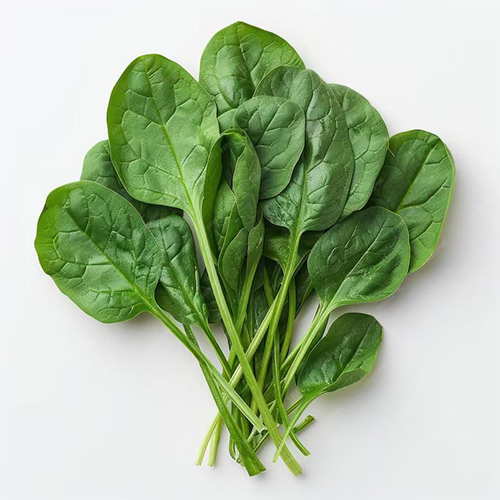
Spinach
Approx 1 kg daily
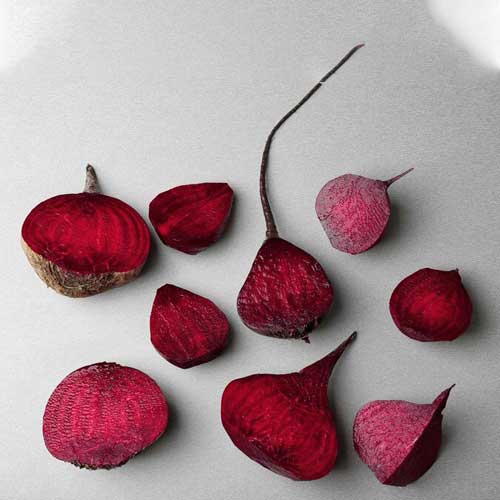
Beetroot
Approx 3 kg daily
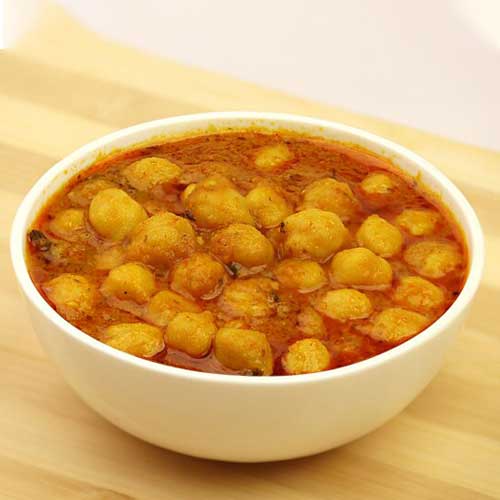
Cooked Chhole
Approx 800 gm daily
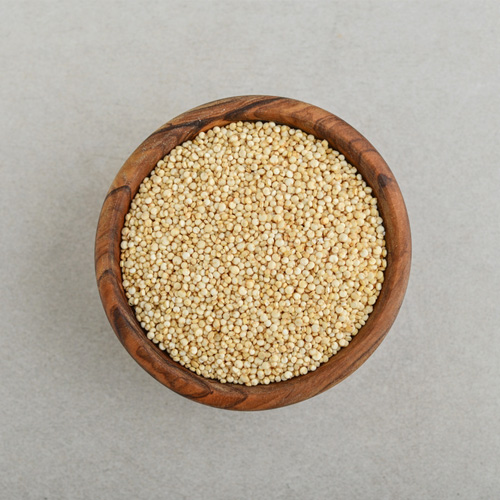
Quinoa
Approx 14 kg daily
It is not possible to eat food in such large quantities
The most feasible way to get adequate iron is through
NUTRITION SUPPLEMENTS
*RDA of iron for menstruating women
Potential benefits of Nutricharge Woman
for adolescent girls and
adult women

Helps adolescents during intensive growth and muscular development

Helps replenish the iron
lost during
each menstruation cycle
Helps in improving mood and regularizing sleep

Synergistic effect of vitamins and minerals helps instrengthening bones and immunity

Helps in dealing with pre‑menstrual pain and discomfort

Helps reduce acne and keep the skin clean and clear

Helps prevent breakage of hair and nails
ICMR RDA of Hemoglobin making
nutrients
for girls and women*
Click to View
Girls and women get these nutrients
in small
quantities from food
Click to View
Take one tablet every day
after breakfast
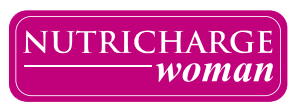
Helps in filling this nutritional gap and obtaining the recommended in take of nutrient daily
Iron
75% of RDA
Vitamin C
62% of RDA
Vitamin B12
45% of RDA
Folate
77% of RDA
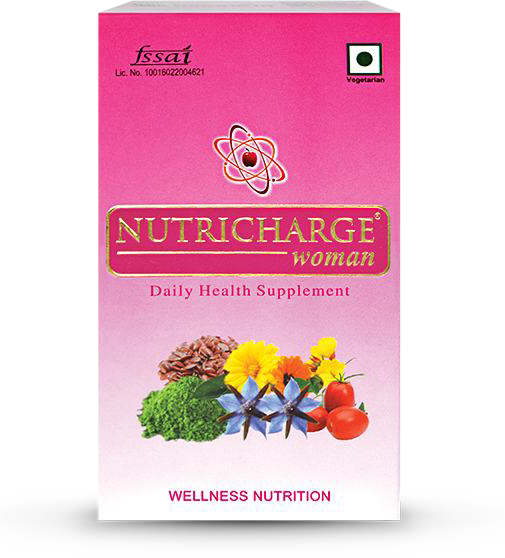
50 Nutrients
- 21 mg of iron
- Most absorbable form of iron - Ferrous bisglycinate
- Contains all nutrients that help in making hemoglobin - Iron, Vitamin C, Vitamin B12 and Folate
- Contains Vitamin C to stimulate better absorption of iron
Who should take?
Who should take?
All those girls and women who menstruate
Who should not take?
Who should not take?
All those women who do not menstruate or are on long‑term medication
How to take?
How to take?
1 tablet with 1 glass of water after breakfast
How long to take?
How long to take?
Should be taken for a long time. Take at least for 3 months
